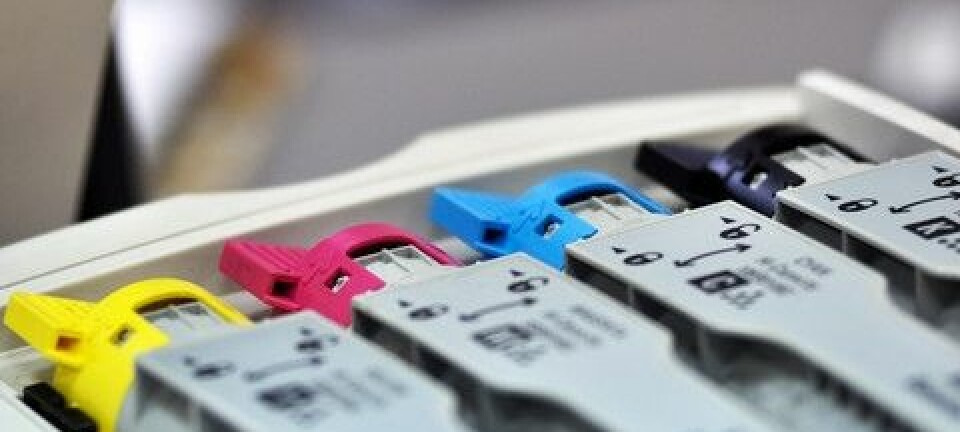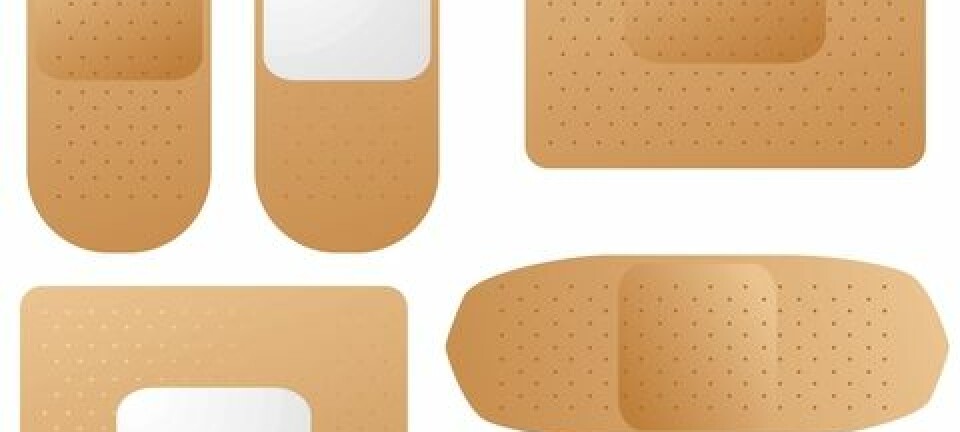An article from Norwegian SciTech News at NTNU
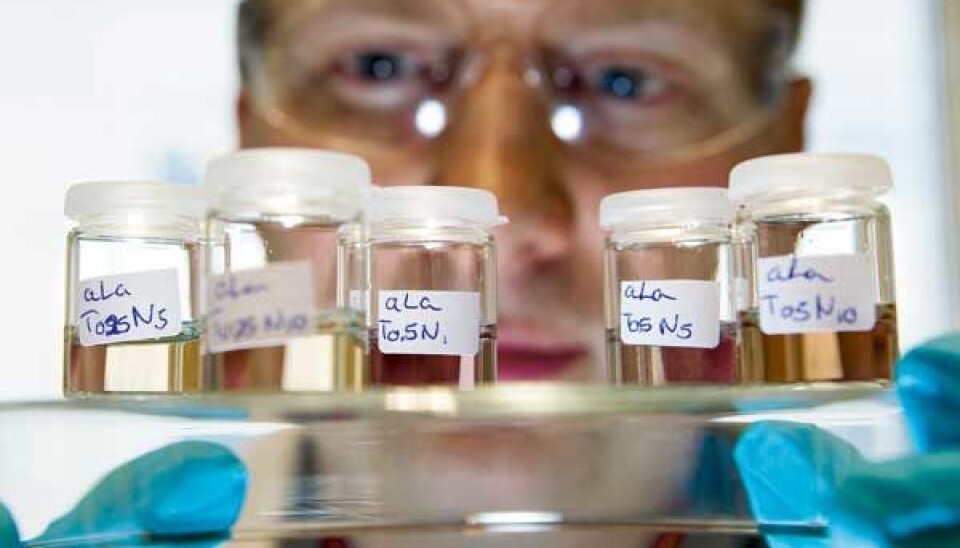
Nanogold for the body
A dash of nanogold in the body can make a difference in the fight against diseases such as cancer and Alzheimer's. Researchers are about to test this potential medication – on bees.
Denne artikkelen er over ti år gammel og kan inneholde utdatert informasjon.
Let's go and make some nanogold,” says Sina Maria Lystvet.
It's Wednesday, and we are in the Ugelstad Laboratory at NTNU. Lystvet, a PhD candidate at the lab, has three ingredients on the table in front of her: gold acid, vitamin C and water. First she adds water to a small glass container. Then she adds a dash of vitamin C solution, and finally a dash of the gold acid.
“There,” says Lystvet and shakes the container a little bit. “This is nanogold.”
It took just one minute to create nanogold. But it has taken eleven years to make the gold nanomedicine that may make a difference in the fight against cancer and Alzheimer’s.
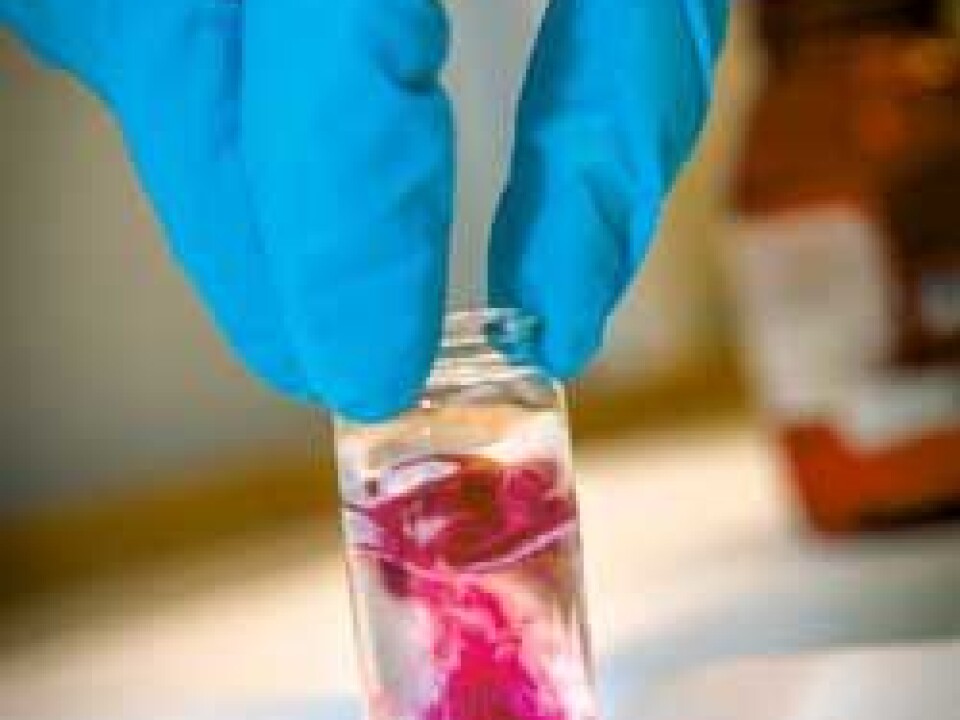
Last autumn, the time finally came to test this golden medicine. On bees.
Size matters
In the same way that the universe is so infinitely great that it can be difficult to understand, nanotechnology is composed of such infinitely small things that it can be difficult to comprehend.
For example, one millilitre of fresh nanogold that Lystvet just made is composed of six billion nanoparticles. And each nanoparticle is made up of 50,000 gold atoms. If we put 10,000 of these gold nanoparticles next to each other, they would still only be the width of a human hair.
“The size of the nanogold gives it entirely different characteristics than the gold in a necklace, for example,” Lystvet says.
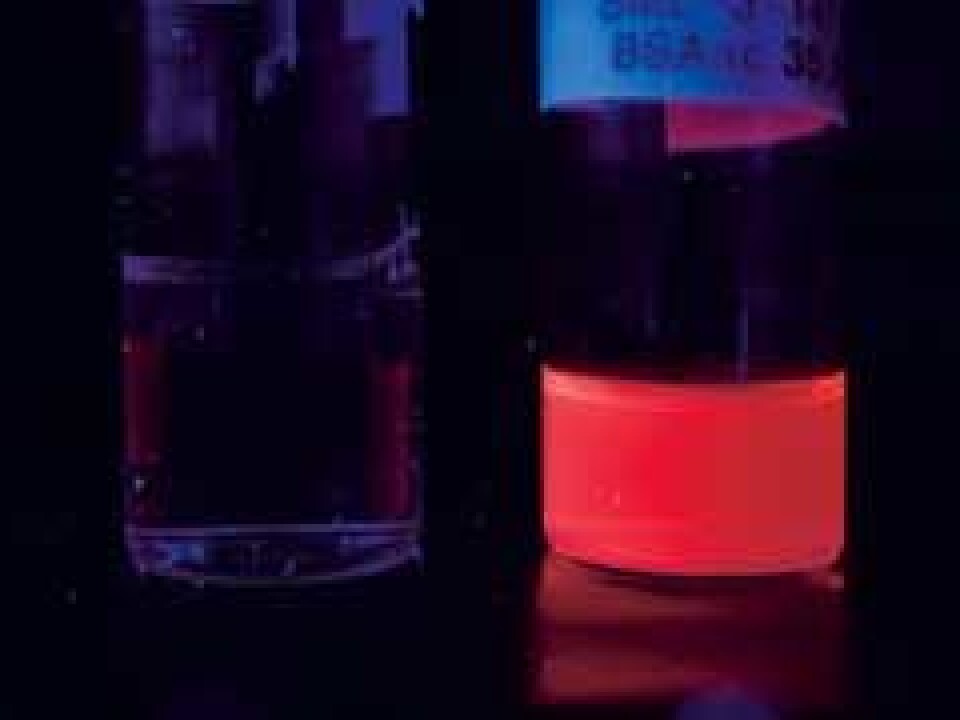
“Not much happens to a gold ring if we put vitamin C on it. It is difficult to attach different materials to a gold ring. But because nanogold is so small, it will bind to other substances, such as proteins or drugs. And that’s what we are working on. We create tiny clusters of nanogold in different proteins. The goal is to produce medicine that can fight diseases such as cancer and Alzheimer’s,” says Lystvet.
Wilhelm Glomm, an associate professor at NTNU, has worked with gold nanoparticles for eleven years. He examines the current batch of nanogold. The colour can tell him a great deal about the gold in the mixtures.
“Yes, this contains many gold nanoparticles. The colour says a lot, for example, about the number of particles and the size of the nanogold,” says Glomm.
Follow the particles
Nanogold is probably quite harmless, but this is also some of what the reaserchers are trying to find out.
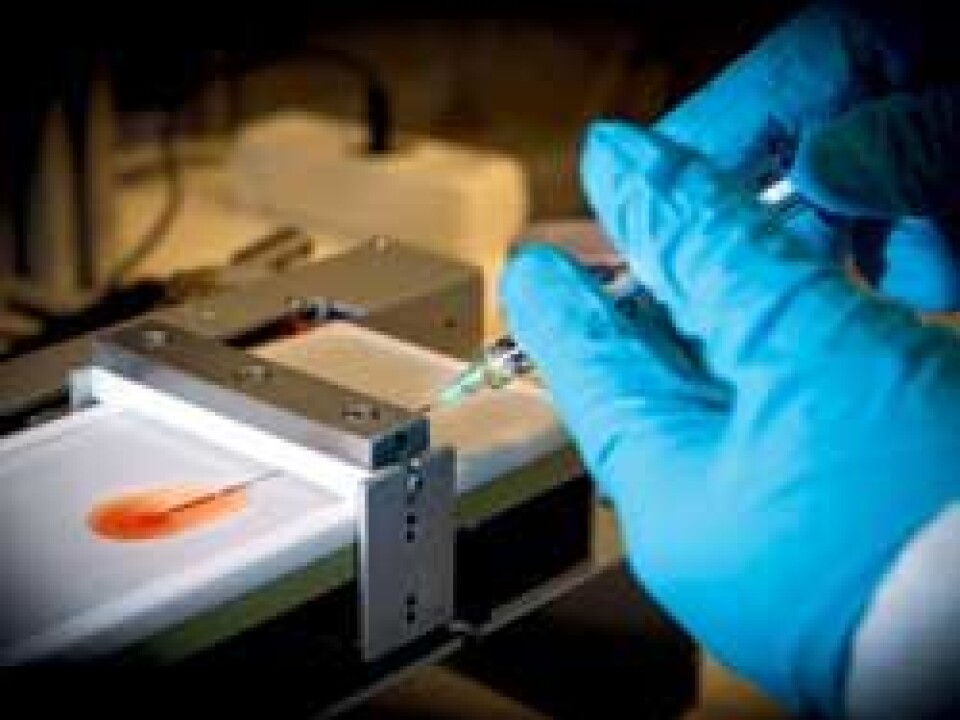
"Individually, neither the protein nor the gold nanoparticles are toxic, but we still don’t know enough about the potentially harmful effects that may occur when you combine them,” says Glomm.
Gold has special optical properties that make it possible for researchers to follow what happens to the particles and their location in the body.
“Gold nanoparticles can be used as a contrast agent and as a medicine at the same time. You can buy solutions with gold and silver nanoparticles in the health food section in larger grocery stores in the United States. According to advertisements, silver nanoparticles are a dietary supplement that allegedly can help most people,” says Glomm.
He has more than 50 international publications in high-ranking chemistry journals, of which about half address nanoparticles and proteins. He has also received the Akzo Nobel Nordic research prize in 2009 for his work in this area.
Gold in cancer medicine can be very effective.
But how will we benefit from the protein manipulation research being conducted at NTNU?
Gold affects protein form
Proteins are the building blocks of all living cells, where each protein has a different task. In humans, this includes everything from building and maintaining muscles, bones, skin and mucous membranes, to transporting oxygen and nutrients in the blood. Proteins are important for absolutely all processes that occur in the body. And the way they work often depends on what type of form they take.
“If we create a cluster of gold inside a protein, the protein will naturally change shape.
A large cluster of gold will change the protein in a different way than a small cluster. We have to have complete control of this aspect. For example, if we have a shovel, but we want one with a smaller shaft or a stronger handle, it will still be a shovel. We do not want it suddenly to be a shovel with a hole in the middle. That's the same with proteins. We want them to remain proteins, and we want to have complete control over how the proteins change, even though they have been altered,” says Glomm.
Gold opens cell walls
In the earliest stage of nanomedicine, the goal was to combine gold nanoparticles with proteins to come up with a new material that reflected the characteristics of both substances. The efforts that resulted in something other than this were either ignored or rejected. It is these efforts, which were previously tossed out, that Glomm has picked up and found interesting.
“What we see are samples where the protein has changed, so that the gold and the protein together result in different properties than what they previously had – the same way that a dry sponge and water combined are something more than the sum of their parts. We at NTNU are at the research front on how to use nanoparticles to alter the protein gradually, and to add that something extra,” says Glomm.
And this is where the magic happens.
Our whole body is built of cells, where the different cells have the equivalent of different nametags on them. A renal cell looks different than an intestinal cell. A brain cell looks different than a muscle cell. Different proteins are able to read the nametags on the cells.
One of the problems with today’s cancer treatments is that healthy cells are killed by chemotherapy drugs. Cancer cells are similar to healthy cells, so that the protein or drug may have difficulty only selecting the sick cells. But the nametag on a cancer cell says that that the environment around it is slightly more acidic than elsewhere, and that cancer cells are more porous.
So if a protein is changed using nanogold so that it can recognize cancer cells and penetrate them, this may allow the creation of new therapeutic treatments. The protein and the nanogold together can be used to deliver chemotherapy to the cancer cells alone. Or you can use the engineered proteins to kill cancer cells – without harming other healthy cells.
“Gold is a possible key to opening the cell walls. Gold in cancer medicine can be very effective,” explains Glomm.
But that's not all: Medicines based on nanogold could also be tomorrow’s miracle drugs for patients with Alzheimer's and Parkinson's disease.
“In patients with Alzheimer's, proteins stick together and form plaque, which result in poor signal transmission from the brain. When we create tiny clusters of gold inside the protein, the proteins spread everywhere and refold themselves. One of our goals is to manipulate the protein so that it will be able to recognize the plaques, dissolve them and transport them out of the body,” says Glomm.
Bees as guinea pigs
After eleven years in the lab, the time has finally come to test how the gold-altered proteins work on something that is alive. A swarm of bees gets the honour of being the first in the world to try this gold nanomedicine.
This is a joint project with the University of Bergen and the Norwegian University of Life Sciences.
“Bees can be suitable laboratory animals. They have a relatively well-developed nervous system, and are sensitive to a number of environmental factors. Bees have a complex social community,” Glomm notes.
After it is tested on bees, the medication will be tested on other animals, and finally on humans. Glomm thinks it will take at least ten years before the gold nanomedicine could potentially be on the market.







